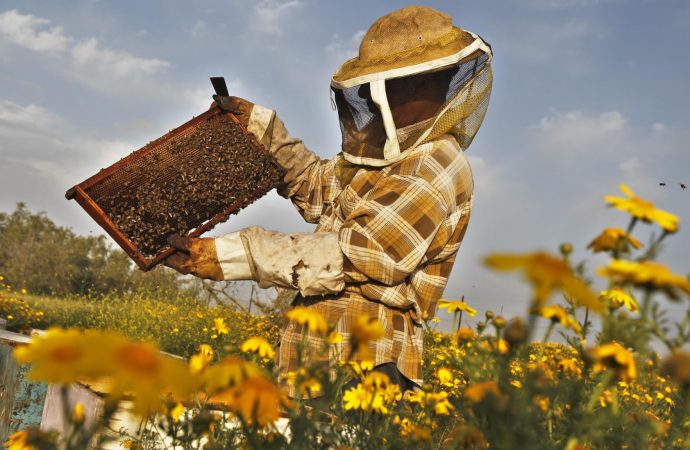Researchers say similar protein to royalactin in humans builds up ‘self-renewal’ stem cells
It is the mysterious substance that turns worker honeybees into queens and fills the shelves of health food shops which tout its unverified powers to fend off ageing, improve fertility and reinvigorate the immune system.
Whether royal jelly has genuine health benefits for humans is a matter for more research, but in a study scientists have cracked one of the most enduring puzzles surrounding the milky gloop: the secret behind its queen-maker magic.
The discovery promises to have an impact far beyond the niche field of melittology. Armed with the findings, scientists are now exploring potential new treatments for wounds and disorders such as muscle wastage and neurodegenerative disease.
Researchers at Stanford University found that the main active component in royal jelly, a protein called royalactin, activates a network of genes that bolsters the ability of stem cells to renew themselves. It means that, with royalactin, an organism can produce more stem cells to build and repair itself with.
“We have a very identifiable avenue through which royal jelly’s effects are carried out,” said Kevin Wang, who led the Stanford team. “It has this activity of keeping stem cells in a self-renewing state.”
Royal jelly has intrigued scientists since its dramatic impact on honeybee development first became clear. But its effects on other animals have sparked even more interest. Previous studies have shown that royal jelly can improve the lifespan of a range of animals from nematode worms to mice.
Writing in the journal Nature Communications, the Stanford team shows that royalactin increased the ability of mouse stem cells to renew themselves, suggesting the protein can have biological effects across species.
The scientists wondered whether a protein similar to the honeybees’ royalactin may be active in humans. After searching scientific databases, they found one that bore a similar structure. The protein is active in the earliest stages of human embryo development, when it is thought to build up the embryo’s supply of stem cells. When it came to naming the protein, Wang suggested Beyoncé – “a nice name for human queen bee” – but settled for regina, the Latin for queen.
“Everything points to this being a super important molecule,” said Wang. “We have identified an early self-renewal molecule that we think helps to establish the source cells for all of the embryo’s stem cells.”
According to Wang, regina could usher in new treatments for disorders that are caused by cells dying off, such as Alzheimer’s disease, heart failure and muscle wastage. The team is now investigating the protein in more detail with the hope of finding drugs that mimic its behaviour in the body. If such drugs can be found, they may help doctors to regenerate patients’ worn-out or damaged tissues by increasing their supplies of stem cells.
Wang believes that the evolutionary process that led to royalactin in honeybees was mirrored in other organisms and gave rise to the regina protein in humans. Because the proteins are similar across species, they produce some of the same effects in different animals. “Our work explains for the first time why royal jelly from honeybees can be beneficial to other organisms,” he said.
For all his research on the substance, Wang does not recommend royal jelly. “We’re not condoning that everyone goes out and buys royal jelly,” he said. Tests on products bought online found that some did not contain any royalactin, he said. “It’s not all made the same.”
Source: The Guardian

































Leave a Comment
You must be logged in to post a comment.